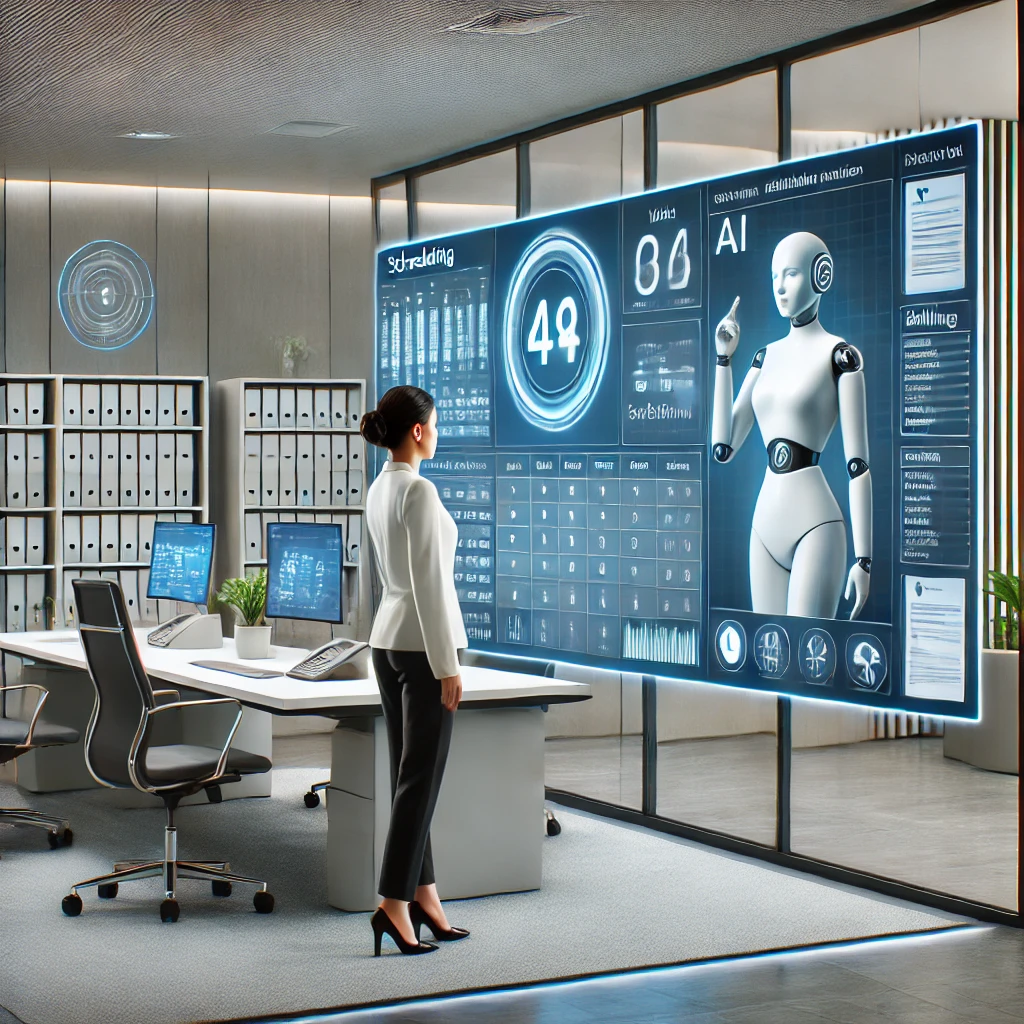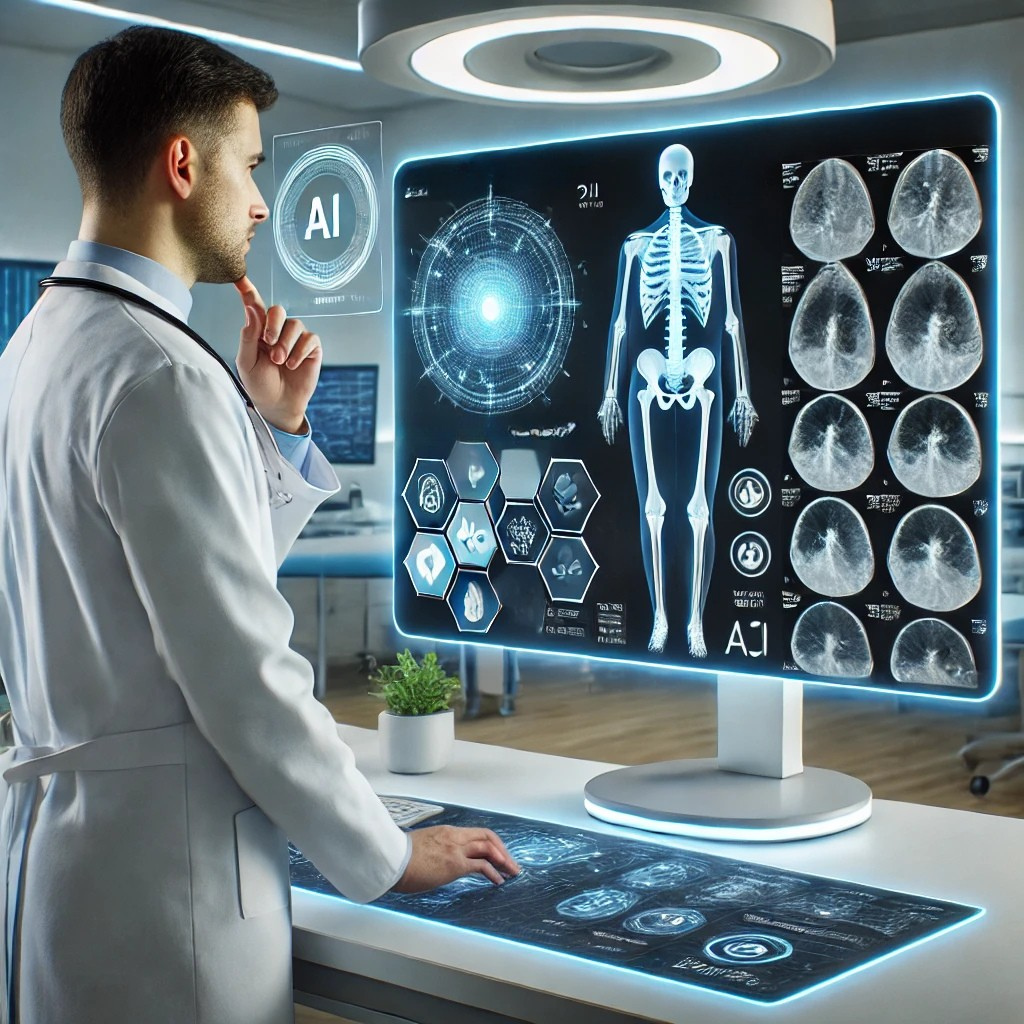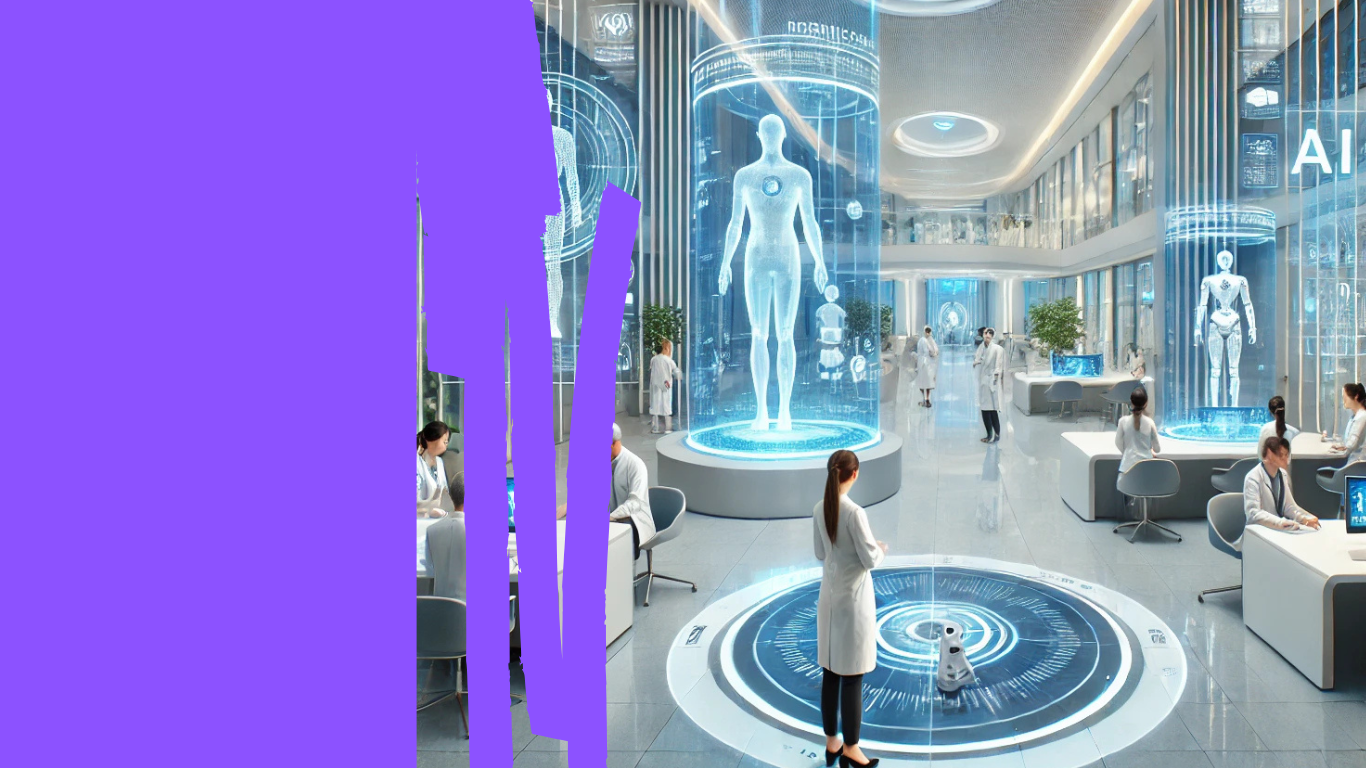The Future of How AI and Staff Roles in the Medical Practice Coexist
AI is transforming healthcare, but it’s not here to replace staff. Instead, it enhances workflows, allowing medical teams to focus on patient care. Let’s explore how AI and staff roles in the medical practice can work together seamlessly to future-proof your practice.

Key Takeaways
- AI enhances staff roles by automating repetitive tasks like scheduling and billing.
- Medical staff remains indispensable for human connection and patient care.
- Cross-training staff ensures adaptability and job security.
- AI complements workflows, improving efficiency and patient satisfaction.
- Successful integration relies on balancing AI’s efficiency with staff’s empathy and expertise.
Why Staff Will Always Be Essential in Medical Practices
Let’s start with the basics: healthcare is, first and foremost, a customer service industry. People want to feel heard, understood, and cared for. You know how frustrating it is to deal with automated phone systems, right? Imagine being a patient trying to navigate your health concerns while talking to a machine.
Sure, some people have adapted to digital communication, but that doesn’t mean they like it. They’re putting up with it because they have to – not because they prefer it. This is where your staff’s human touch makes all the difference. Patients want someone they can talk to. Someone who listens, empathizes, and understands them on a level no algorithm ever will.
The True Role of AI in Medical Practices
AI is already a game-changer in many ways. AI can streamline repetitive tasks that bog down your team from billing and coding to scheduling and even diagnostic assistance. But here’s the catch: AI is not meant to replace your staff – it’s meant to supplement them.
For example:
- AI in billing and coding: Yes, it can minimize errors and speed up claims processing. But you still need a human to oversee the process, address unique patient situations, and handle anything unexpected.
- AI in patient calls: While AI can direct calls or answer FAQs, patients will always prefer speaking to a human when discussing their health concerns or complex issues.
This balance between human oversight and AI efficiency is where the magic happens.
How to Future-Proof Your Practice with AI
If you’re concerned about the impact of AI on staff roles in the medical practice, there’s one simple solution: cross-train your staff.
Imagine this: You have a team member who only handles appointment scheduling. If AI steps in to automate some of that, they might feel their role is at risk. But if they’re trained in other areas—like billing, patient check-ins, or basic IT troubleshooting—they become indispensable.
To explore tools that streamline these workflows, check out Top AI Tools for Healthcare Practices for practical options.
Cross-training benefits everyone:
- Your staff gains job security and grows professionally.
- Your practice becomes more flexible and efficient.
- You won’t need to hire new people for every task – you already have a knowledgeable, versatile team.
And here’s the kicker: even without AI, this kind of cross-training is just plain smart. When staff understand how their roles connect and impact others in the practice, everything runs smoother.
AI and Staff Roles: A Partnership, Not a Competition
Here’s the takeaway: AI isn’t the enemy of your staff. It’s the ultimate teammate. When used correctly, AI takes care of repetitive, time-consuming tasks so your staff can focus on what they do best – building relationships with patients and providing exceptional care.
By embracing AI as a supplement, not a replacement, you’re setting your practice up for long-term success. Combine that with cross-training, and you’ll create a team that’s flexible, efficient, and ready for the future.
How AI and Staff Roles Work Together in Practice
Let’s get into the nitty-gritty. While we’ve already established that AI and staff roles in the medical practice are partners (not rivals), you might still be wondering how this dynamic plays out on a day-to-day basis. Here’s how AI can seamlessly integrate with your staff’s existing workflows, taking your practice to the next level.
1. AI in Administrative Tasks: Freeing Up Time for Human Interaction
Administrative work is the bane of most healthcare staff’s existence. It’s tedious, repetitive, and takes precious time away from direct patient care. This is where AI really shines.

For example:
- Appointment Scheduling: AI tools can handle online scheduling, sending out appointment reminders, and even rescheduling cancellations.
- Billing and Coding: Medical coding software powered by AI can drastically reduce human errors in claims, which speeds up reimbursement times.
- Document Management: AI can sort, organize, and retrieve medical records in seconds – no more wasted hours digging through filing cabinets or bloated digital archives.
But here’s the key: AI doesn’t eliminate the need for human oversight. Think of it as your staff’s ultra-organized assistant. Your front desk team still needs to be there to ensure accuracy, handle exceptions, and provide a personal touch.
2. AI in Patient Communication: Streamlining Without Losing Empathy
Patients expect quick answers, but they also want to feel heard. This creates a balancing act that AI is perfectly suited to assist with.
Take patient inquiries, for example:
- AI Chatbots can answer common questions about office hours, prescription refills, or insurance policies.
- Voice Assistants can help route calls to the appropriate department or person.
However, when it comes to sensitive issues – like a health concern or a miscommunication – patients still need human empathy. AI can handle the routine stuff, but your staff steps in when things get personal.
3. AI for Clinical Support: Enhancing (Not Replacing) Expertise
AI isn’t just for administrative tasks – it’s also making waves in clinical care.
Here’s where it gets exciting:
- Diagnostics: AI-powered tools can analyze medical images, flagging abnormalities in X-rays or MRIs that a doctor might miss.
- Treatment Planning: AI can suggest potential treatment options based on a patient’s medical history and symptoms.
- Monitoring: Wearable devices equipped with AI can track patient vitals and alert staff to potential issues in real time.
Notice the pattern? AI provides support. It’s not there to replace your clinicians or medical staff – it’s there to make their work more accurate, efficient, and informed.
What This Means for Your Team
So, what does all this mean for your staff? It’s simple:
- AI reduces their workload.
- AI improves their accuracy.
- AI frees up their time for the one thing no machine can replicate: human connection.
When staff have less paperwork to fill out or fewer phone calls to answer, they can focus more on what really matters – like spending extra time with patients, improving customer service, or brainstorming ways to make your practice run smoother.
4. Cross-Training: Your Secret Weapon Against AI Fear
One of the biggest concerns staff have about AI is, “What happens to my job if this machine can do it faster?” This fear is valid – and that’s why cross-training is non-negotiable.
Imagine your receptionist can also:
- Assist with patient check-ins.
- Help with billing during busy times.
- Manage patient follow-ups for critical care cases.
Suddenly, they’re not just a receptionist anymore – they’re a multifunctional superstar. AI might take over one part of their role, but their expanded skill set ensures they’ll always be valuable.
And this doesn’t just apply to front desk staff. Nurses, techs, and even office managers benefit from learning how to adapt and take on new responsibilities. The more versatile your team is, the less they’ll feel threatened by AI – and the more smoothly your practice will run.
5. AI + Staff = Better Patient Care
Let’s not forget the ultimate goal: better outcomes for your patients. By blending AI with your team’s expertise, you’re creating a practice that’s faster, more efficient, and more patient-focused.
Consider this scenario:
A patient comes in for a routine check-up.
- AI assists your staff by analyzing the patient’s medical history in seconds, flagging anything unusual.
- Your staff then spends less time on paperwork and more time asking questions, building rapport, and making the patient feel cared for.
- If additional tests are needed, AI tools ensure they’re scheduled promptly, coded correctly, and billed accurately.
The result? A smoother experience for the patient and less stress for your team.
AI Technology with Scribes in Healthcare: Revolutionizing Patient Care
FAQ: AI and Staff Roles in the Medical Practice
Here’s a quick FAQ section to address some of the burning questions medical
l professionals have about AI and staff roles in the medical practice.
Will AI take over jobs in medical practices?
No. AI isn’t here to replace staff; it’s here to support them. It automates repetitive tasks like scheduling, billing, and coding, which frees up your team’s time to focus on providing quality care. Staff will always be essential for the human connection that patients need and value.
AI is great at streamlining workflows. For example:
- Appointment scheduling: AI tools can automate reminders, rescheduling, and no-show follow-ups.
- Billing and coding: AI can minimize errors and speed up insurance claims.
- Data management: AI quickly organizes and retrieves patient records.
- Diagnostics: It analyzes medical images, flagging abnormalities for doctors to review.
While AI takes care of routine tasks, your staff focuses on patient-facing interactions and more complex responsibilities.
Will AI make staff less important?
Not at all. Patients want to feel heard and cared for, and that’s something AI cannot replicate. In fact, AI allows your staff to spend more time on patient care by handling administrative burdens. Think of AI as an assistant, not a replacement.
How can I prepare my staff for AI integration?
Start by cross-training your staff. The more skills they have, the less they’ll feel threatened by AI. If someone specializes in scheduling, teach them billing. If someone handles patient calls, train them on data entry. Versatile employees are invaluable and can easily adapt to new workflows.
Can AI improve patient satisfaction?
Yes! AI improves patient satisfaction in a few ways:
- It speeds up routine processes, like scheduling and billing.
- It enhances diagnostic accuracy, ensuring patients get timely and effective care.
- It allows staff to focus more on human interaction and building relationships with patients.
Patients benefit from a more streamlined, efficient experience without losing the personal touch.
What are the risks of relying on AI in a medical practice?
AI is not perfect, and there are a few risks to consider:
- Over-reliance: If staff rely too heavily on AI without proper oversight, errors may go unnoticed.
- Lack of empathy: AI can’t provide the emotional support patients need. Always ensure your team is there for the human touch.
- Technical glitches: Like any software, AI tools can fail. You’ll need a contingency plan and tech support to address issues quickly.

The key is to use AI as a tool to enhance workflows, not as a replacement for human judgment or interaction.
Can AI help reduce staff burnout?
Absolutely. By automating time-consuming tasks, AI lightens the workload for your team. This means fewer late nights dealing with billing errors or scheduling headaches and more time to focus on meaningful, patient-focused work.
What are the best AI tools for medical practices?
There’s no one-size-fits-all answer, but some popular AI tools for medical practices include:
- Scheduling software like Zocdoc or Chronometriq.
- Billing and coding tools like Kareo or AdvancedMD.
- AI diagnostic tools like IBM Watson Health or Zebra Medical Vision.
When choosing an AI tool, look for one that integrates smoothly into your existing systems and offers reliable support.
How can I reassure my staff about AI integration?
Communication is key. Be transparent about why you’re introducing AI and how it will benefit both the practice and the staff. Highlight that AI will enhance their roles, not replace them, and emphasize the importance of cross-training so they feel secure and empowered.
What’s the biggest benefit of AI in medical practices?
Efficiency. AI reduces administrative burdens, improves accuracy, and streamlines workflows. This means your team can spend more time on what matters most: building relationships with patients and delivering top-notch care.
AI and Staff Roles in Medical Practices: A Future-Proof Partnership
To wrap it all up, AI in medical practices is not the job-killer many fear it to be. Instead, it’s an empowering tool that makes your staff more effective, your workflows smoother, and your patients happier. By automating repetitive tasks like scheduling, billing, and data management, AI allows your team to focus on the human side of healthcare—the empathy, connection, and personal care that no machine can replicate.
But here’s the secret sauce: success lies in balance. The best practices won’t choose AI over staff or vice versa. They’ll pair AI’s efficiency with staff’s emotional intelligence to create a hybrid model of care that works better for everyone.
If you’re feeling uncertain about integrating AI, here’s what to remember:
- Your staff is still indispensable. Patients want human connection, and AI can’t replace that.
- AI is here to support, not replace. It’s a powerful assistant, but humans still need to oversee and refine processes.
- Cross-training is your safety net. By investing in your team’s versatility, you’re preparing for any changes the future might bring.
At the end of the day, AI and staff roles in medical practices are not in competition—they’re allies. Together, they can transform how your practice operates, helping you deliver care that’s not only faster and more accurate but also deeply human.
